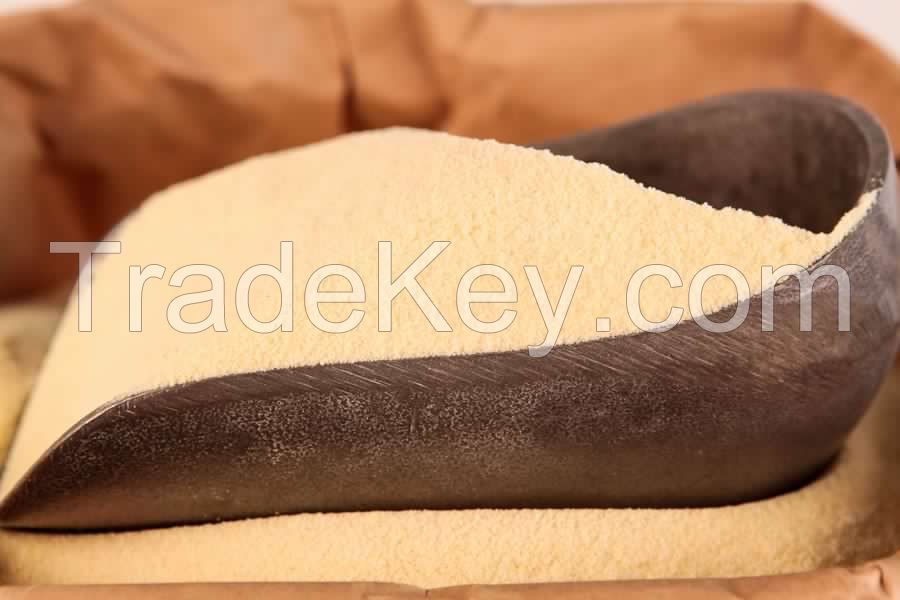Description
All-Purpose Flour ( Farina *0)
All-purpose flour is the finely ground endosperm of high protein
wheat, separated from the bran and germ during the milling process.
It has great gluten strength and can be used for a wide range of
yeast breads, rolls, buns, crusty breads, breadsticks, pizza dough,
and pitta bread, as well as specialty bakery items such as pastry
shells, cookies, pie dough, biscuits, pancakes, waffles, doughnuts,
brownies and many other cakes.
Self-Raising Flour
Self-raising flour is all-purpose flour that also contains raising
agents, such as baking powder. It is used in recipes where the
mixture needs to expand on cooking to give it a light result. It is
suitable for all varieties of cakes, including layer cakes, sheet
cakes, chiffon cakes, wedding cakes, sponge cakes, snack cakes,
scones, muffins, doughnuts and it will also work in certain
cookies, crackers and pastries, brownies, muffins and quick breads,
such as corn bread, beerbread, etc.
Durum Flour (Village Flour)
Durum flour is also known as yellow flour and is derived from durum
wheat. It is high in protein and is used for a wide selection of
traditional Mediteraneab breads, pitta and flat breads, as well as
many traditional mediteranean snacks, such as cheese, olive,
spinach pies, etc. It is also suited for sheeted pasta products
such as ravioli and noodles.
Semolina (Coarse Semolina)
Semolina is also derived from **0% durum wheat. It is the coarsely
ground endosperm of durum wheat and is taken at an earlier stage
than of the milling process. Semolina is therefore more granular
than Durum Flour. The high protein Semolina may be coarse or fine
(according to the size of the granules) but both kinds are ideal
for the production of quality pasta, as well as many savoury
snacks, sweet puddings and desserts. It is also used for couscous
in Africa and Latin America.
Whole Meal Flour (Whole Meal Flour)
Whole wheat flour is a coarse-textured flour containing the bran,
germ and endosperm. The presence of bran reduces the gluten
development therefore baked products made from whole wheat flour
tend to be heavier and thicker than those made from white flour.
Whole wheat flour is rich in B-vitamins, vitamin E and protein, and
contains more trace minerals and dietary fiber than white flour. In
most recipes, whole wheat flour is mixed in equal quantities with
plain white flour, to produce a wide range of crusty breads, bread
rolls, pitta breads and many others.
Our Advice
WHEAT FLOUR FOR BREAD (FROM HIGH QUALITY SOFT WHEAT)
Grade : First
Taste: typical of flour
Smell: typical of flour
Moisture: *4.*0%
Ash
0,*0%
Wet gluten: *6% Min
